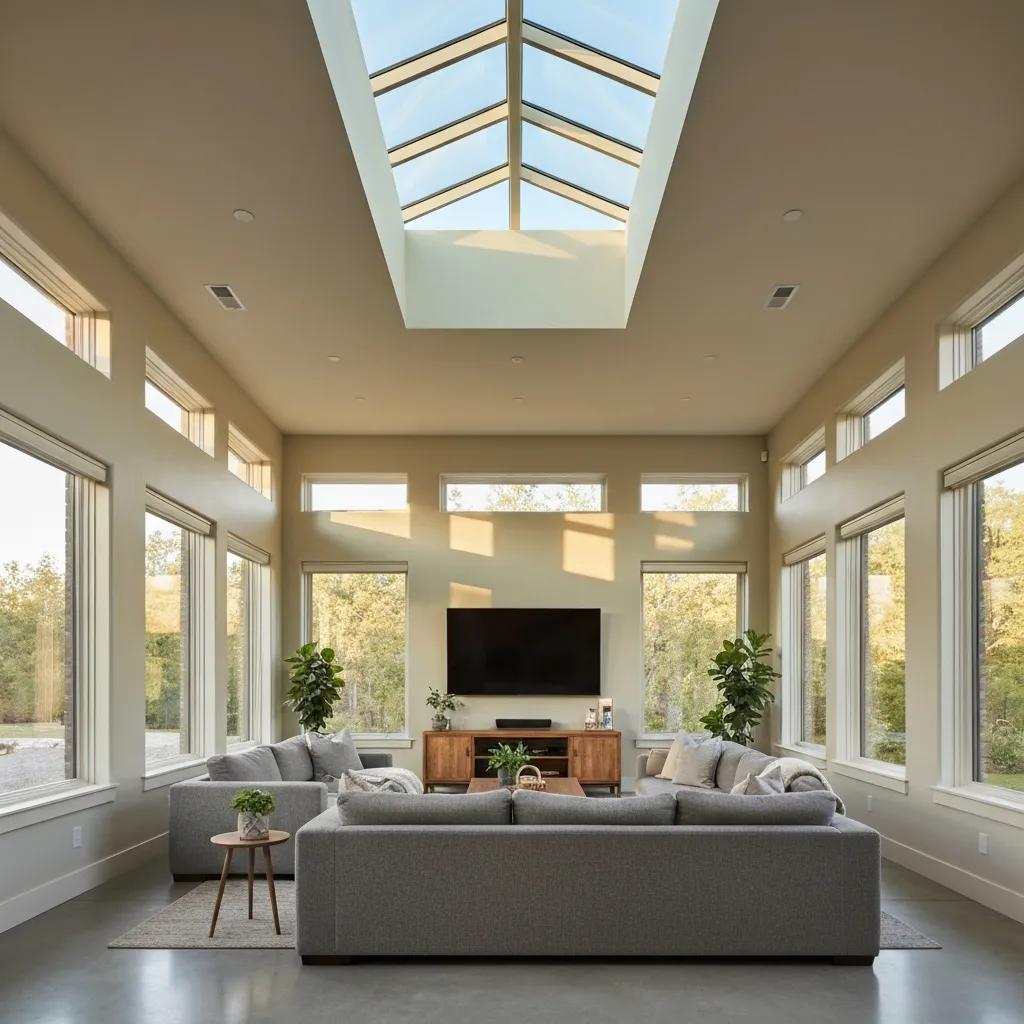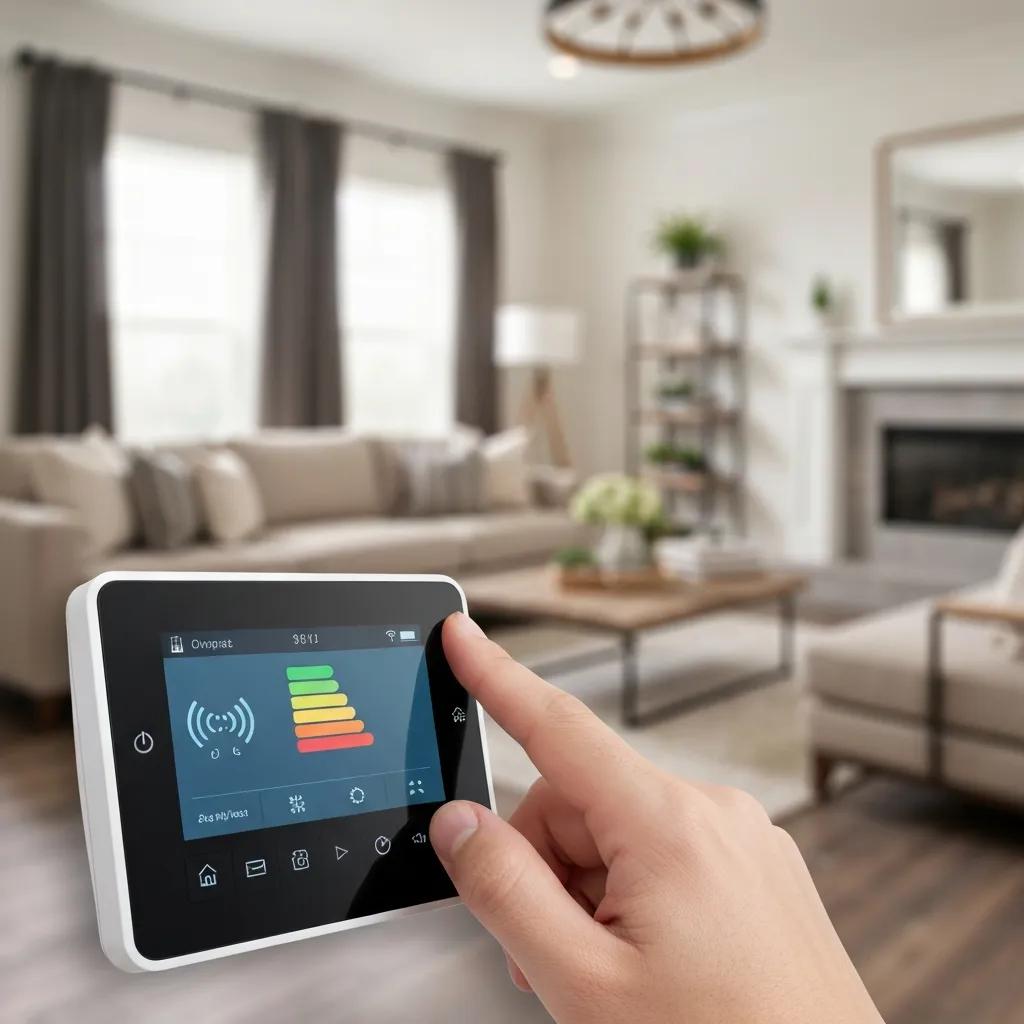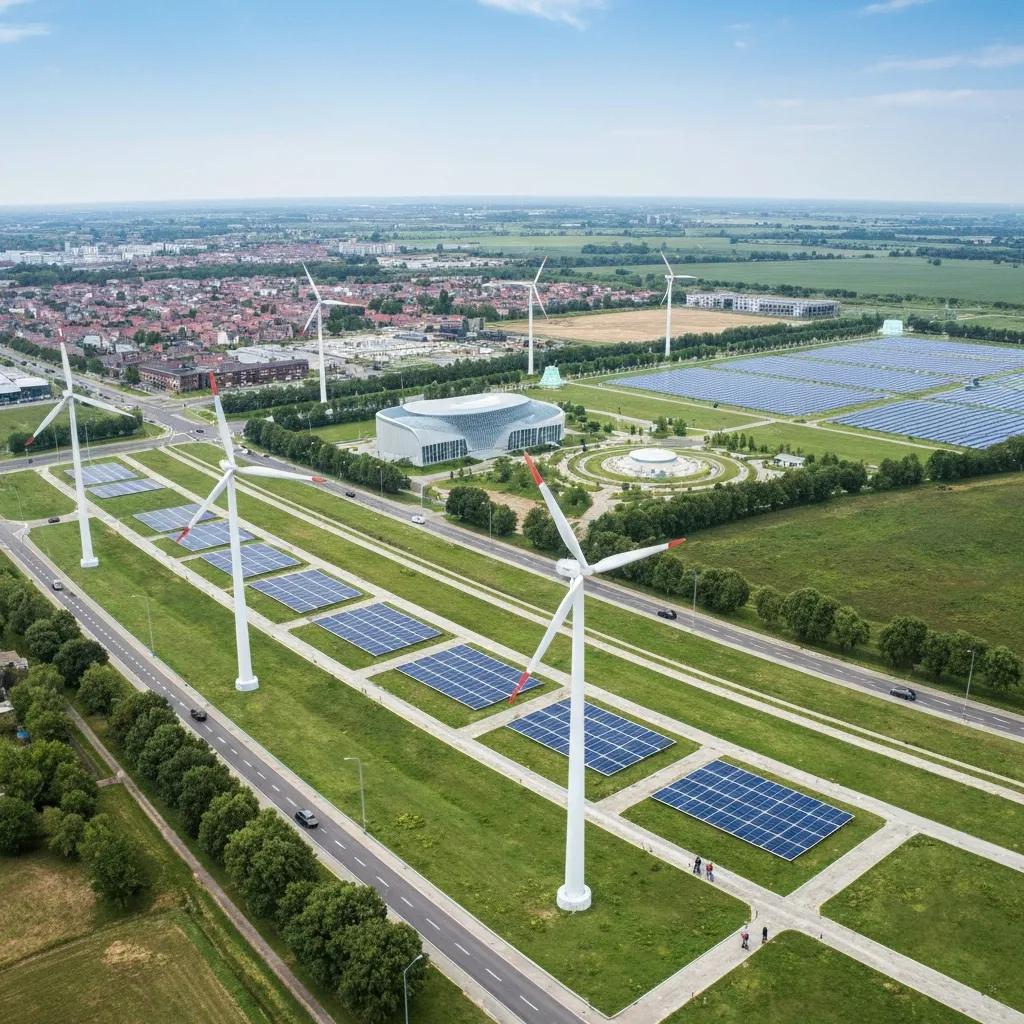Optimize Your Comfort with Energy Efficient HVAC Solutions

Modern Energy-Efficient HVAC Tech for Savings & Comfort
If your electric bills keep rising or some rooms never feel right, today’s energy‑efficient HVAC options can lower costs and make your whole home more comfortable. This guide explains what “energy efficient” really means for Texas homes, how SEER2 ratings translate into monthly savings, and which technologies—smart thermostats, heat pumps, ductless mini‑splits, and geothermal systems—deliver the biggest homeowner wins. You’ll get clear, practical advice on installation and maintenance, an overview of local rebates and federal tax credits, and tips for choosing a pro who understands Texas weather. Ahead: how efficiency is measured, how smart controls cut waste, system comparisons for local climates, and steps to lock in the best savings with good installation and routine care. By the end you’ll know the trade‑offs, likely savings ranges, and the next steps to upgrade smoothly and affordably.
What Are Energy Efficient HVAC Systems and Why Do They Matter for Texas Homes?
Energy‑efficient HVAC systems are heating and cooling setups built to use less electricity while keeping your home as—or more—comfortable. They do that by improving key parts—compressors, condenser coils, variable‑speed blowers, and control systems—so the equipment moves heat more effectively instead of simply running harder and longer. In Texas, where cooling is the main demand for much of the year, higher efficiency usually means noticeably lower electric bills and better humidity control, which improves indoor comfort and air quality. Knowing how efficiency ratings work helps you set realistic upgrade goals and pick systems that match our climate and how you use your home. The next section breaks down SEER2, the updated standard that better represents real‑world cooling performance and makes comparisons easier.
How Do SEER2 Ratings Explain HVAC Energy Efficiency?
SEER2 is a standardized rating that shows how much cooling a system delivers per unit of electricity across a range of operating conditions. It replaces the older SEER test to better reflect today’s equipment and testing methods. A higher SEER2 number means the system moves more heat for each kilowatt‑hour it uses, so upgrading from a lower‑rated unit to a higher SEER2 model usually lowers annual cooling energy use. The actual savings depend on your insulation, duct condition, and thermostat habits, but many homeowners find a mid‑to‑high SEER2 unit gives the best balance between upfront cost and ongoing savings. Understanding these bands helps you set realistic payback expectations before buying.
Different SEER2 bands and what they mean for homeowners are summarized below.
| SEER2 Rating Band | Typical Range | Estimated Annual Cooling Energy Reduction |
|---|---|---|
| Standard | 13–15 SEER2 | Baseline; limited energy savings compared with older units |
| High Efficiency | 16–18 SEER2 | Moderate savings; a solid choice for many Texas homes |
| Premium | 19+ SEER2 | Top efficiency; higher upfront cost but strongest long‑term savings |
Choosing a higher SEER2 band generally increases annual savings, though the exact reduction depends on how your home is used, the condition of ducts, and local climate patterns.
What Are the Main Benefits of Energy Efficient HVAC for Homeowners?
Upgrading to an energy‑efficient system gives you tangible value: lower utility bills, steadier comfort, and longer equipment life. When systems run less and avoid hard starts, components stay quieter, break down less often, and last longer. Variable‑speed parts and smarter controls keep temperatures and humidity steadier, which improves indoor air quality and daily comfort. Energy upgrades also tend to raise resale value and may qualify you for rebates or tax credits that speed up payback.
Energy‑efficient HVAC systems offer these homeowner benefits:
- Lower monthly energy bills — using less electricity reduces operating costs.
- Smoother comfort and better humidity control — fewer hot or cold spots year‑round.
- Longer equipment life and fewer repairs — less wear on compressors and blowers.
These gains pair naturally with smart controls, like smart thermostats, which squeeze out additional, behavior‑driven savings.
How Do Smart Thermostats Improve Home Comfort and Energy Savings?

Smart thermostats learn patterns, adapt to how you live, and tweak setpoints to cut wasted heating and cooling without sacrificing comfort. They use indoor temperature and sometimes humidity data, schedules or geo‑awareness to lower demand when nobody’s home, and communicate with your HVAC to avoid short cycling. In Texas, features that sense humidity and support multi‑stage control are particularly helpful, since they reduce runtime during hot, humid months while keeping homes comfortable. The next section lists which features matter most here and how they translate to real‑world savings.
The Function of Thermostats in Residential Energy Consumption and Efficiency
Thermostats translate occupant temperature preferences into on/off and setpoint commands for heating and cooling systems. As the primary point of control, they have a major influence on household energy use. Advances in thermostat technology—driven by smarter controls, connectivity, and shifting utility needs—are helping homes balance comfort, energy use, and health more precisely than older manual devices.
Thermostat interface and usability: a survey, A Meier, 2010
What Features Make Smart Thermostats Ideal for Texas Homes?
Look for learning algorithms, remote access, geofencing, humidity sensing, and multi‑stage control. Learning schedules cut manual programming time; geofencing can drop cooling when everyone leaves and restore it before you get home; humidity sensing keeps indoor air more comfortable through our humid summers; and multi‑stage control pairs well with variable‑speed equipment for tighter temperature regulation. Remote alerts and maintenance reminders help you catch problems early so efficiency doesn’t slip.
Smart thermostats can deliver noticeable savings and make your system easier to manage—next we’ll cover installation and what savings to expect.
How Does Smart Thermostat Installation Work and What Are the Savings?
Most compatible systems take under an hour to install: check wiring, connect to the home Wi‑Fi, and set up schedules or preferences. Older or proprietary systems may need an adapter or professional hookup to enable features like multi‑stage control or humidification.
Typical energy savings range from about 8–15% on heating and cooling bills when geo‑awareness, sensible scheduling, and setback strategies are used. Homes with variable occupancy often see faster payback. If your system is complex or you prefer hands‑off setup, a pro can ensure full feature integration and optimal configuration.
Expedition HVAC installs and configures smart thermostats during tune‑ups or system replacements and can include setup during a service visit; contact us for a free quote or consultation to confirm compatibility and expected savings.
What Are the Advantages of Heat Pumps for Efficient Heating and Cooling in Texas?
Heat pumps move heat instead of creating it, which makes them highly efficient for year‑round comfort—especially in much of Texas where extreme cold is uncommon. In cooling mode they move indoor heat outside; in heating mode they pull outdoor heat into the house. Modern air‑source and dual‑fuel heat pumps paired with variable‑speed equipment and good ductwork deliver meaningful efficiency gains. When evaluating a heat pump, consider local winter temperatures, electric rates, and whether a dual‑fuel setup (heat pump plus furnace) makes sense for your area. The next section explains different heat pump types and when each fits Texas homes.
How Do Air-Source and Dual-Fuel Heat Pumps Work?
Air‑source heat pumps transfer heat between indoor and outdoor air using a refrigerant cycle, and newer compressors and controls keep them efficient in mild to moderate cold. Dual‑fuel systems pair a heat pump with a gas furnace so the heat pump handles most heating while the furnace kicks in during very cold snaps. In many parts of Texas, air‑source units are sufficient; in cooler or marginal areas a dual‑fuel approach can add reliability and better overall efficiency. Proper sizing and commissioning ensure the system runs efficiently and limits unnecessary backup heating.
Understanding these differences helps homeowners estimate likely savings, which we summarize next.
| Heat Pump Type | Efficiency & Use Case | Estimated Typical Savings |
|---|---|---|
| Air-Source | Efficient for mild winters; strong cooling performance | 20–40% vs older electric resistance systems |
| Dual-Fuel | Heat pump with gas furnace backup for cold snaps | Balances efficiency and comfort in variable climates |
| Variable-Speed Heat Pump | Smooth modulation for tight temperature and humidity control | Higher efficiency and comfort; higher upfront cost |
This comparison helps match the right heat pump approach to your home and climate, so you can plan costs and expected savings more accurately.
What Energy and Cost Savings Can Texas Homeowners Expect from Heat Pumps?
Replacing older systems often produces substantial cuts in heating and cooling energy—commonly in the 15–35% range depending on the starting equipment and your home’s envelope. Insulation, duct leakage, thermostat habits, and local electricity rates affect the outcome. For example, swapping a decade‑old central AC for a high‑efficiency heat pump and sealing ducts can noticeably lower annual cooling costs and improve winter performance, shortening payback when incentives are available. ENERGY STAR and recent studies show well‑matched heat pumps deliver reliable savings and better comfort when installed and commissioned correctly.
Correct sizing and professional commissioning are critical to realizing these savings; next we look at ductless options when ducts aren’t practical.
Why Are Ductless Mini-Split Systems Gaining Popularity for Zoned Comfort and Energy Savings?
Ductless mini‑splits give room‑by‑room control with wall‑mounted indoor units connected to an outdoor compressor, cutting distribution losses and enabling true zoning without ducts. They’re ideal for additions, retrofits, or homes with leaky or poorly designed ducts, and they let you condition only the rooms you use.
With inverter‑driven compressors and multi‑zone capability, mini‑splits deliver strong part‑load efficiency and better humidity control than many single‑speed central systems. The next section covers when they’re the right choice and what trade‑offs to weigh.
When Should Homeowners Choose Ductless Mini-Splits?
Choose a ductless mini‑split when you don’t have existing ducts, are adding conditioned space, or can save energy by zoning only occupied rooms.
Pros: less disruptive installation than full duct replacement, precise room control, and quiet indoor units. Cons: higher cost per ton and indoor‑unit placement can affect aesthetics.
For many Texas retrofits—attic conversions, sunrooms, or homes with segmented living areas—mini‑splits often hit the sweet spot between installation cost and ongoing energy savings.
Deciding between mini‑splits and central systems depends on project goals; the table below compares typical installation factors.
| System | Installation Complexity | Typical Cost Range | Zoning Advantage |
|---|---|---|---|
| Ductless Mini-Split | Moderate; requires wall penetrations and outdoor unit | Mid‑to‑high per zone | Excellent; independent control for each room |
| Central AC with Ducts | High if ducts need replacement | Variable; lower per‑ton cost in larger homes | Limited without duct zoning upgrades |
| Window/Portable Units | Low installation complexity | Low upfront cost | Poor; inefficient and often noisy |
This table highlights why mini‑splits are popular for zone control and retrofits, letting you weigh upfront complexity against long‑term comfort gains.
How Does Installation of Ductless Mini-Splits Enhance Home Comfort?
When installed correctly, ductless mini‑splits provide faster, targeted temperature control and reduce hot or cold spots by conditioning only the spaces you use. Inverter compressors modulate capacity to match load, cutting short cycling and improving humidity control—important during Texas summers.
Quiet indoor units and high SEER2‑equivalent performance make mini‑splits a strong option where comfort and energy efficiency both matter.
Consider drainage, indoor‑unit placement, and routine maintenance when deciding—these details can point homeowners toward higher‑complexity options like geothermal if long‑term efficiency is the priority.
How Does Geothermal HVAC Technology Provide Sustainable and Cost-Effective Home Comfort?

Geothermal systems use the ground’s stable temperature as a heat source or sink, delivering steady heating and cooling efficiencies that can outperform air‑source equipment. A fluid circulates through ground loops—horizontal or vertical—to transfer heat between your home and the earth, allowing the heat pump to operate with less energy for each unit of heating or cooling delivered.
Though geothermal installs cost more up front because of loop drilling or trenching, they often have the lowest operating costs and the longest equipment life, which appeals to homeowners planning to stay in place long term. The next section explains the physical reason geothermal systems are so efficient.
What Makes Geothermal Systems More Efficient Than Traditional HVAC?
Geothermal systems take advantage of relatively constant ground temperatures: once you’re a few feet below grade, temperatures stay steady year‑round. That smaller temperature difference means compressors do less work, so coefficients of performance (COPs) are often much higher than combustion heaters or standard heat pumps. The ground loop and indoor components also tend to be long‑lived, reducing lifecycle maintenance and replacement costs. All that adds up to predictable energy savings and a smaller carbon footprint when site conditions are suitable.
What Are the Long-Term Savings and Environmental Benefits of Geothermal HVAC?
Over a 10–20 year horizon, geothermal systems can deliver significant lifecycle savings through much lower annual energy costs and reduced maintenance needs compared with conventional systems. Lower electricity use cuts greenhouse‑gas emissions when grid power is the fuel source, and pairing geothermal with efficient distribution and controls increases the environmental benefit. Payback depends on installation complexity, available incentives, and energy prices, but for many homeowners the lifetime savings and durability make geothermal an attractive long‑term choice.
How Can Texas Homeowners Maximize Savings with Installation, Maintenance, and Local Incentives?
To get the most from an efficient system, follow three steps: pick the right equipment, ensure professional installation and commissioning, and use available federal, state, and utility incentives to lower net cost. Proper installation — correct sizing, balanced airflow, accurate refrigerant charge, and control integration — determines whether a high‑efficiency unit actually delivers its promised savings. Routine maintenance keeps systems near peak performance and extends life. Combining incentives with sensible financing and equipment choices can shorten payback; the sections below explain why pros matter, offer a homeowner maintenance checklist, and point to common incentives to check.
Why Is Professional Installation Crucial for Energy Efficient HVAC Systems?
Professional installation matters because efficiency gains depend on exact system matching, proper refrigerant charge, correct airflow, and thorough commissioning—details that are easy to miss with DIY or inexperienced installers. Oversized or undersized equipment, leaky ducts, or the wrong refrigerant charge can wipe out the expected efficiency of a high‑SEER2 model. Certified technicians also ensure code compliance, protect warranties, and advise on thermostat and zoning setup. Choosing a local team that knows Texas climate patterns and codes raises the odds your system will perform as promised.
Professional installers can also simplify incentive paperwork, which helps secure rebates and credits—covered next along with maintenance tips.
What Maintenance Tips Help Keep HVAC Systems Efficient and Long-Lasting?
Maintaining efficiency is a mix of seasonal homeowner tasks and annual professional tune‑ups that catch issues early. Replace or clean filters every 1–3 months depending on use and filter type, keep outdoor units free of debris and plants, and make sure vents and returns aren’t blocked. Schedule an annual professional tune‑up—ideally in spring for cooling systems—that includes refrigerant checks, coil cleaning, blower inspection, and airflow measurement. Small thermostat tweaks and sealing or adding insulation complement mechanical care and support long‑term efficiency.
- Change filters regularly to preserve airflow and efficiency.
- Keep outdoor units clear of leaves and obstructions so heat exchange works properly.
- Schedule annual professional tune‑ups to verify refrigerant levels, clean coils, and measure airflow.
Following these steps helps your system deliver the savings it was designed to produce.
What Texas Rebates and Tax Credits Are Available for Energy Efficient HVAC Upgrades?
Texas homeowners should look into federal tax credits for qualifying heat pumps and energy‑efficient home improvements, as well as utility and local rebates that change over time. Federal incentives usually require specific equipment criteria and documentation, so confirm eligibility early—this can influence your equipment choice. Many utilities and municipalities offer rebates for high‑efficiency heat pumps, duct sealing, or whole‑home upgrades; eligibility often depends on contractor certification and pre‑/post‑installation paperwork. A good installer can help with the forms to improve your chance of getting available incentives.
- Federal tax credits: Confirm qualifying systems and required documentation before purchase.
- Utility and local rebates: Check your provider for current programs and eligibility rules.
- Installer assistance: Professional contractors often handle paperwork to help secure rebates.
These incentives reduce upfront expense and are easiest to claim when a professional installer coordinates the process.
Why Choose Expedition HVAC for Your Energy Efficient Upgrade
Expedition HVAC helps homeowners move to efficient systems with a straightforward, customer‑first approach built on local experience. Our technicians are salary‑only (no commission), so recommendations focus on your needs—not a sales quota.
We serve Garland, Richardson, Mesquite, Rockwall, and Rowlett, and offer veteran discounts to support our community during upgrades and replacements. If you want a low‑stress upgrade, request a free quote or consultation to review system options, smart control compatibility, expected savings, and incentive eligibility with a team that knows the area.
Ready for a More Efficient Home? (implied final CTA)
Start with an energy assessment to see your home’s baseline performance and estimated savings before choosing equipment.
A professional assessment finds duct leaks, insulation gaps, and control opportunities that affect system selection and payback.
To arrange a consultation or request a free quote, call Expedition HVAC to discuss compatibility, financing options, or to schedule a site visit in Garland, Richardson, Mesquite, Rockwall, or Rowlett.
Working with a local, trust‑focused provider lowers risk and increases the chance your new system delivers the comfort and savings you expect.
Call Expedition HVAC to schedule an assessment or request a free quote and start planning your efficient, comfortable home upgrade.

